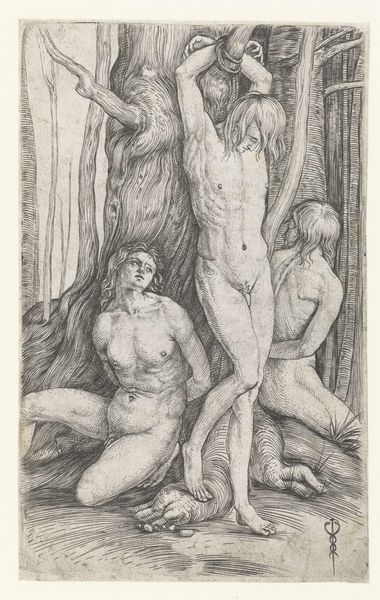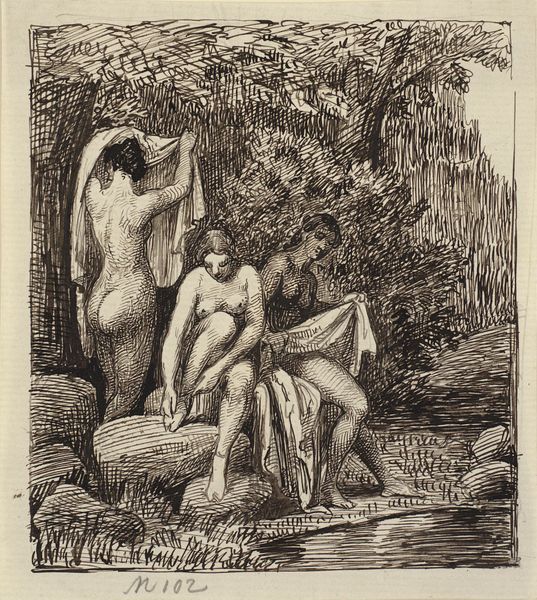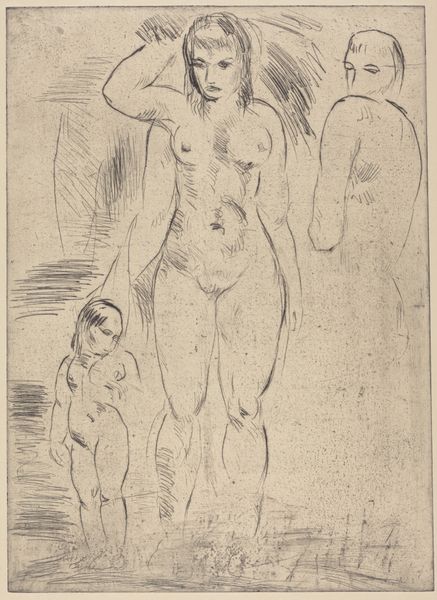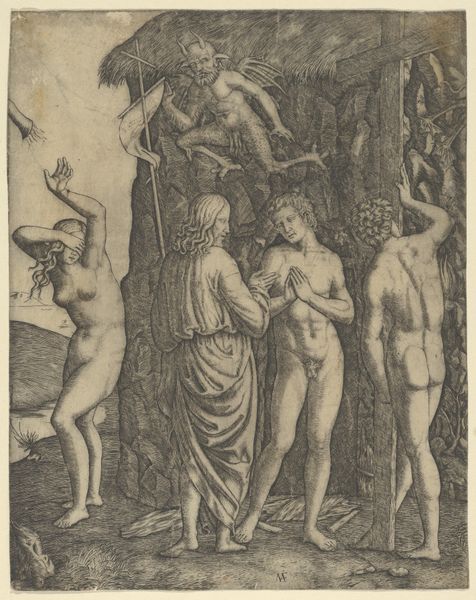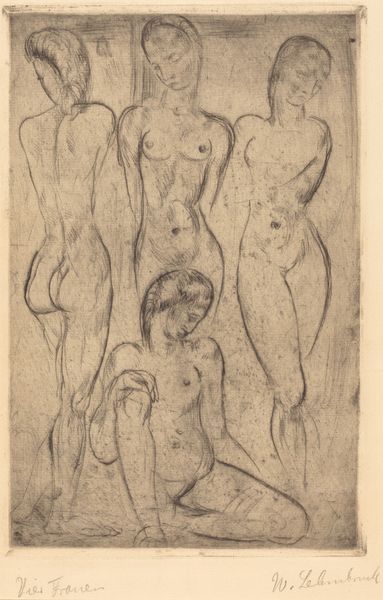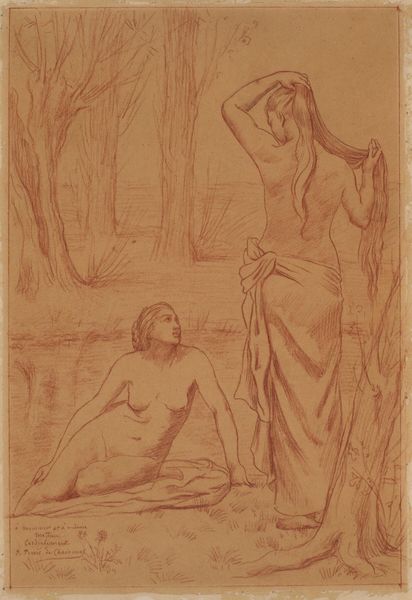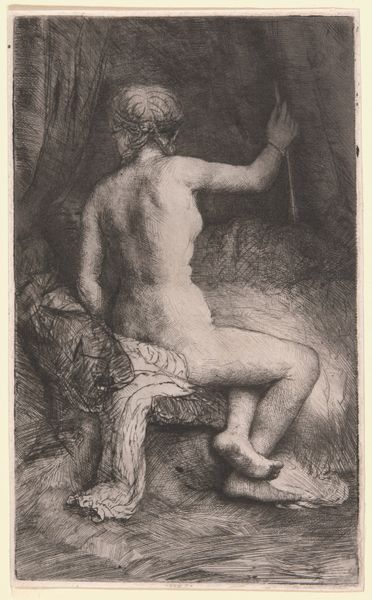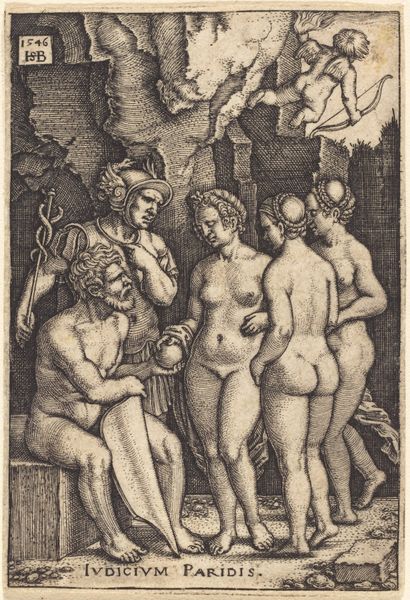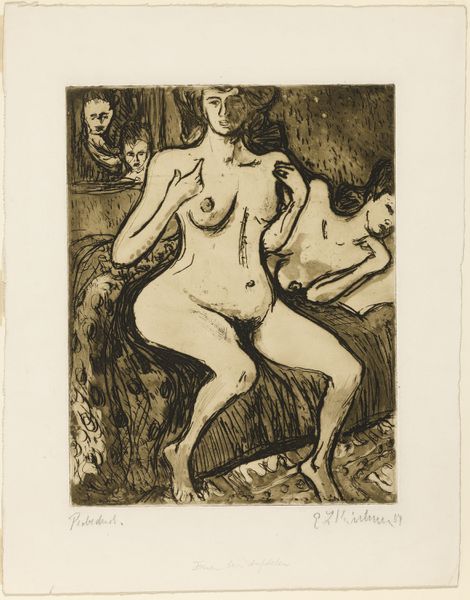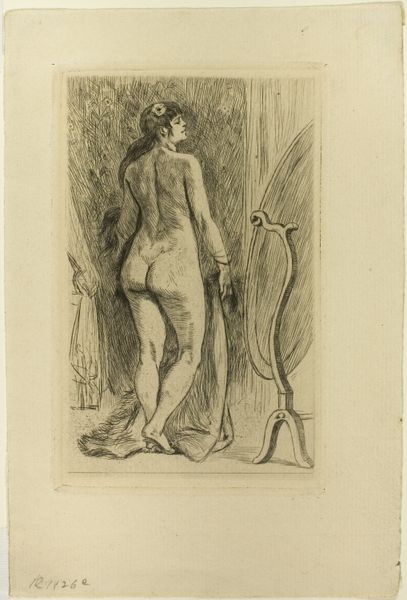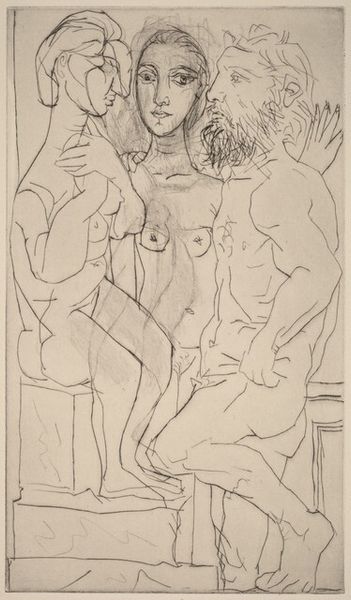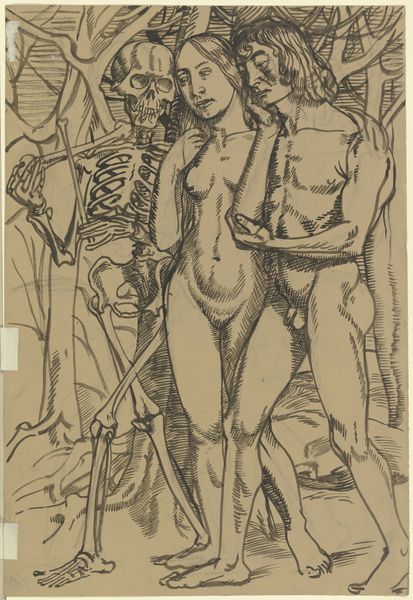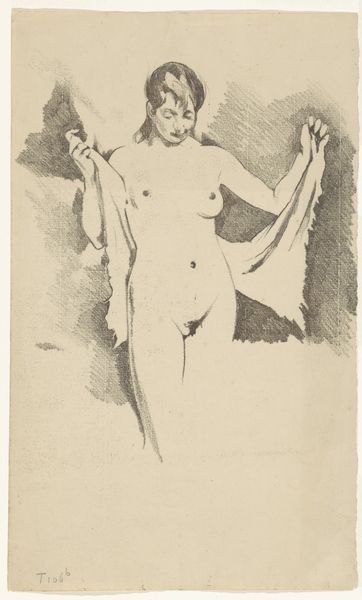
print, engraving
# print
#
figuration
#
history-painting
#
northern-renaissance
#
nude
#
engraving
Dimensions: 6 3/16 x 3 7/8 in. (15.72 x 9.84 cm) (image)
Copyright: Public Domain
Curator: Looking at this image, my first thought is the power of black and white. What feelings arise in you as you contemplate it? Editor: Somber. Claustrophobic. A knot of figures bound to nature, bound to fate. I feel caught, pinned, and perhaps a little too implicated. Curator: Indeed, it evokes a sense of captivity. What we're observing is "The Three Prisoners," an engraving by Jacopo de' Barbari dating back to around 1505, here on display at the Minneapolis Institute of Art. De’ Barbari was a pivotal figure in the Northern Renaissance, known for his engagement with classical forms and humanist themes. Editor: Classical? Hmm, if I hadn't known the date, I might have placed it much later. There is a kind of anguish here that doesn't always jibe with idealized classical aesthetics; the figures look less statuesque heroes and more desperate, mortal humans trapped. Is that a deliberate move away from established styles? Curator: It’s fascinating that you see that! We could argue that his anatomical studies reflect a growing interest in scientific observation of the human body at the time. But, undeniably, de' Barbari also imbued the scene with psychological tension. Consider the context—the early 16th century saw growing religious and political upheaval in Europe. This imagery may subtly reflect societal anxieties. Editor: Anxiety definitely bleeds from it. Take the figure to the left: bound, certainly, but that intense upward gaze feels like defiance...or, is it resignation? It's all so elegantly ambiguous, even playful with its composition. And while the theme is dark, look at that crisp line work! Almost celebratory... Curator: An excellent point, it's these artistic dichotomies which hold our interest. In the political realm, it’s been theorized that perhaps he subtly criticizes specific rulers or injustices through veiled allegory. In artistic discourse, de' Barbari pushes against expectations, a mark of Renaissance artistic ferment. Editor: Maybe, but that may only be theories now. For me, "The Three Prisoners" persists, years later, not only because of Jacopo de’ Barbari's skill but because he laid bare fundamental human plights and strengths—a silent shout through time, maybe a shout we need still to this day. Curator: Perhaps... perhaps indeed. It is an intriguing perspective. Thank you. Editor: The pleasure was all mine.
Comments
minneapolisinstituteofart almost 2 years ago
⋮
Jacopo de' Barbari's engravings are signed with a caduceus (a staff with two serpents twined around it) and until the mid-19th century his true identity was a mystery. It is now known that he was the first Italian Renaissance artist of note to travel to Germany and the Netherlands, and that his work was known and appreciated by Albrecht Dürer. There is still much scholarly debate as to the exact influence of Barbari's work on Dürer's engravings, and vise versa, and a comparison between the two artists does indeed pose a variety of interesting questions. In this engraving of three naked men set in a landscape there is a close relationship to Dürer's prints of the same period. In this work we see the lively graphic manner of Barbari's engravings as well as his emphasis on long, sinuous modeling lines.
Join the conversation
Join millions of artists and users on Artera today and experience the ultimate creative platform.
